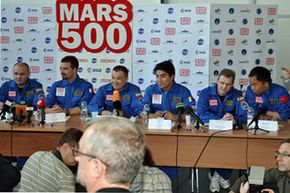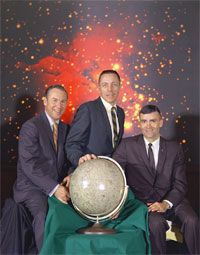Humans have long dreamed of leaving Earth behind and living in outer space. But turning the dream into reality is not as easy as "Star Trek" would make it seem. The main problem, of course, is that humans have a fair number of requirements to survive. We need breathable air. We need water. We need food. And, ideally, we need a certain amount of gravity to keep our minds and bodies happy. To live elsewhere in the universe, we need to carry these elements, manufacture them or find a place that looks, behaves and feels like Earth.
For decades, astronauts have lived very successfully in orbiting space stations. In the mid-1970s, three Skylab crews lived in low-Earth orbit 28 days, 59 days and 84 days respectively, each breaking the previous mission's endurance record. Soviet cosmonauts shattered all of these records aboard the Mir space station. Musa Manarov and Vladimir Titov spent 366 days aboard Mir in the late 1980s, only to be bested by their countryman Valeri Polyakov, who completed a 438-day tour of duty in 1995.
Advertisement
Today, astronauts continue to live successfully, for days and weeks at a time, on the International Space Station (ISS). Yet some might argue that throwing down a welcome mat on the porch of the ISS is not the same as living "elsewhere." After all, the space station orbits just 211 miles (340 kilometers) above Earth's surface. It's not a stone's throw away, to be sure, but a space shuttle can reach it in a couple of days. That's not a long time if the crew is waiting for a mission-critical part or a fresh supply of Twinkies.



